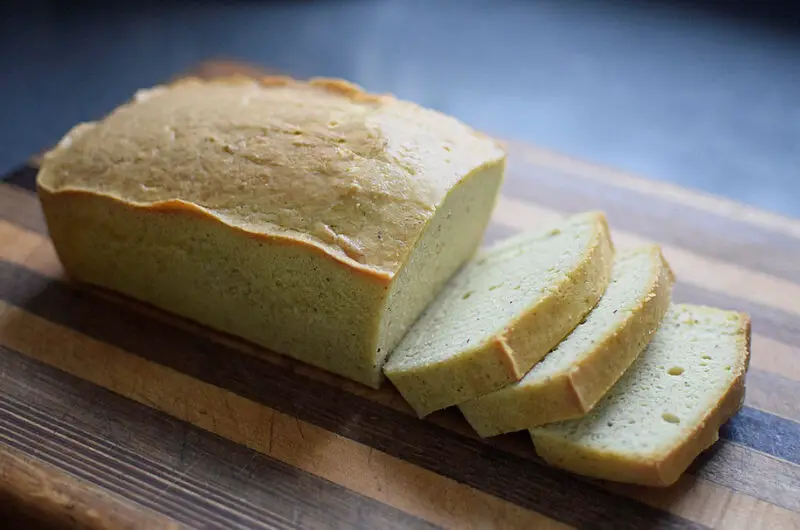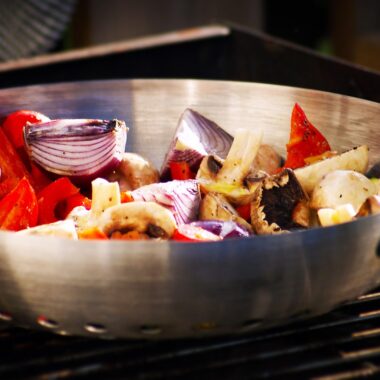The Mediterranean diet is widely regarded as one of the healthiest eating patterns in the world. Inspired by the traditional cuisines of countries bordering the Mediterranean Sea—such as Greece, Italy, Spain, and Morocco—it emphasizes whole, minimally processed foods like fruits, vegetables, legumes, nuts, seeds, olive oil, fish, and moderate amounts of wine. While bread is not the centerpiece of this diet, it plays a significant supporting role in Mediterranean culinary traditions. However, not all bread aligns with the principles of this heart-healthy, nutrient-dense eating plan. In this article, we’ll explore the best types of bread for the Mediterranean diet, their nutritional benefits, how they fit into the lifestyle, and even some practical tips for choosing or making your own.
Bread in the Mediterranean Diet: A Cultural Staple
Bread has been a cornerstone of Mediterranean cuisine for millennia. From the crusty loaves of Italy’s ciabatta to the soft, pillowy pita of Greece and the dense, spiced breads of North Africa, it’s a food that transcends borders and brings people together. In the Mediterranean diet, bread is not demonized as it often is in modern low-carb trends.
Instead, it’s consumed in moderation, typically alongside nutrient-rich foods like olive oil, hummus, fresh vegetables, or grilled fish.
The key to incorporating bread into the Mediterranean diet lies in its quality and ingredients. The diet prioritizes whole, unrefined grains over processed white flour, reflecting a broader emphasis on natural, plant-based foods.
Refined breads—think mass-produced white sandwich bread—offer little nutritional value and can spike blood sugar, which runs counter to the diet’s focus on steady energy and heart health. Instead, the best breads for the Mediterranean diet are those that are minimally processed, fiber-rich, and made with wholesome ingredients.
Nutritional Criteria for Mediterranean-Friendly Bread
Before diving into specific types of bread, let’s establish what makes a bread suitable for the Mediterranean diet:
- Whole Grains: The Mediterranean diet favors whole grains like wheat, barley, spelt, or rye over refined grains. Whole grains retain their bran and germ, providing fiber, vitamins (like B vitamins), and minerals (such as magnesium and iron).
- Low in Added Sugars: Traditional Mediterranean breads are not sweet. Added sugars, common in many commercial breads, should be avoided to maintain the diet’s low-glycemic profile.
- Healthy Fats: While bread itself isn’t a significant source of fat, it’s often paired with olive oil or used to sop up sauces made with healthy fats. Some breads may even incorporate olive oil into the dough.
- Minimal Ingredients: Authentic Mediterranean breads typically feature simple recipes—flour, water, yeast or sourdough starter, and salt. Preservatives, artificial flavors, and dough conditioners are out of place here.
- Fiber Content: High-fiber breads support digestion and satiety, aligning with the diet’s emphasis on plant-based eating.
With these criteria in mind, let’s explore the best bread options for the Mediterranean diet.
Top Bread Choices for the Mediterranean Diet
1. Whole Wheat Bread
Whole wheat bread is a classic choice that aligns beautifully with Mediterranean principles. Made from whole wheat flour, it retains the grain’s nutrient-dense bran and germ, offering more fiber and antioxidants than its white counterpart. In Mediterranean countries like Italy and Spain, whole wheat bread is a rustic staple, often enjoyed with a drizzle of olive oil or a smear of tomato as in the Spanish dish pan con tomate.
- Why It Fits: Whole wheat bread provides complex carbohydrates for sustained energy, plus fiber to support gut health—both key components of the Mediterranean diet.
- Nutritional Perks: A slice of whole wheat bread (about 30g) typically contains 2-3g of fiber, 4g of protein, and essential micronutrients like manganese and selenium.
- How to Enjoy: Pair it with a Mediterranean-inspired topping like avocado, feta cheese, or a homemade olive tapenade.
When choosing whole wheat bread, opt for varieties labeled “100% whole wheat” to ensure no refined flour has snuck in. Check the ingredient list—whole wheat flour should be the first item, and the list should be short.
2. Sourdough Bread
Sourdough is a Mediterranean diet darling, especially in its whole-grain form. This bread is made through a natural fermentation process using a starter of flour and water, which cultivates wild yeast and beneficial bacteria. The result is a tangy, chewy loaf that’s easier to digest than many commercial breads.
- Why It Fits: The fermentation process reduces phytic acid (an “anti-nutrient” that can block mineral absorption) and lowers the bread’s glycemic index, making it a smart choice for blood sugar control—a priority in the Mediterranean diet.
- Nutritional Perks: Whole-grain sourdough offers similar fiber and nutrient benefits to whole wheat bread, with the added bonus of gut-friendly probiotics from fermentation.
- How to Enjoy: Dip it in olive oil and balsamic vinegar, or use it as a base for bruschetta with fresh tomatoes, basil, and garlic.
Look for artisan-style sourdough made with whole-grain flour rather than white flour for maximum Mediterranean alignment.
3. Pita Bread
Pita bread, a staple in Greece, Turkey, and the Levant, is a versatile option for the Mediterranean diet. Traditionally made with simple ingredients—flour, water, yeast, and salt—pita can be found in both white and whole wheat varieties. The whole wheat version is the better pick for this diet.
- Why It Fits: Whole wheat pita is a portable, fiber-rich bread that pairs perfectly with Mediterranean staples like hummus, tzatziki, or grilled vegetables.
- Nutritional Perks: A 6-inch whole wheat pita provides about 4g of fiber, 6g of protein, and a modest calorie count (around 150 kcal), making it a balanced addition to meals.
- How to Enjoy: Stuff it with falafel, tabbouleh, and a drizzle of tahini for a satisfying, diet-friendly lunch.
Avoid pita breads with added oils or sugars, and opt for brands that keep it simple and whole-grain.
4. Rye Bread
Rye bread, though more associated with Northern Europe, has a place in the Mediterranean diet when made with whole rye flour. Its dense texture and earthy flavor make it a hearty companion to Mediterranean soups and stews.
- Why It Fits: Whole rye is high in fiber and has a lower glycemic index than wheat, supporting the diet’s focus on heart health and stable blood sugar.
- Nutritional Perks: A slice of whole rye bread delivers 3-4g of fiber, plus lignans—plant compounds with antioxidant properties.
- How to Enjoy: Serve it alongside a bowl of lentil soup or top it with a spread of roasted eggplant and a sprinkle of za’atar.
Choose dark rye over light rye for a higher whole-grain content, and steer clear of versions loaded with molasses or artificial coloring.
5. Barley Bread
Barley, an ancient grain prized in Mediterranean cuisines, is often overlooked in favor of wheat. Yet barley bread—made from barley flour or a mix of barley and wheat—offers a nutty flavor and exceptional nutrition.
- Why It Fits: Barley is rich in beta-glucans, a type of soluble fiber that lowers cholesterol and supports cardiovascular health, a cornerstone of the Mediterranean diet.
- Nutritional Perks: A serving of barley bread can provide 3-5g of fiber, along with magnesium and phosphorus.
- How to Enjoy: Use it to scoop up a Mediterranean vegetable stew or pair it with a side of olives and goat cheese.
Barley bread can be harder to find commercially, so consider baking your own with a mix of barley and whole wheat flour for structure.
6. Spelt Bread
Spelt, an ancient relative of wheat, is gaining popularity for its nutty taste and nutritional profile. In Mediterranean-inspired baking, spelt bread offers a slightly sweet, tender crumb that’s both wholesome and satisfying.
- Why It Fits: Whole spelt flour is less processed than modern wheat and provides a good dose of fiber, protein, and minerals like iron and zinc.
- Nutritional Perks: A slice of spelt bread offers about 3g of fiber and 5g of protein, with a milder impact on blood sugar than refined grains.
- How to Enjoy: Toast it and top with ricotta, figs, and a drizzle of honey for a Mediterranean-style breakfast.
Ensure you’re buying 100% whole spelt bread, as refined spelt lacks the same benefits.
What to Avoid: Breads That Don’t Fit the Mediterranean Diet
Not all bread belongs in the Mediterranean diet. Here are some to skip:
- White Bread: Made from refined flour, it lacks fiber and nutrients, offering empty calories that clash with the diet’s whole-food ethos.
- Sweet Breads: Brioche, cinnamon rolls, and other sugar-heavy breads are too far removed from Mediterranean traditions.
- Highly Processed Commercial Breads: Many supermarket loaves contain preservatives, high-fructose corn syrup, and hydrogenated oils—none of which align with the diet’s focus on natural ingredients.
Making Your Own Mediterranean Bread
For the ultimate control over ingredients, consider baking your own bread. Here’s a simple recipe for a Mediterranean-inspired whole wheat olive oil bread:
Ingredients:
- 3 cups whole wheat flour
- 1 ¼ cups warm water
- 2 tbsp olive oil
- 1 tsp salt
- 1 tbsp active dry yeast
- Optional: 1 tsp dried rosemary or thyme
Instructions:
- Dissolve yeast in warm water and let sit for 5 minutes until foamy.
- In a large bowl, mix flour, salt, and herbs (if using). Add yeast mixture and olive oil.
- Knead for 8-10 minutes until smooth. Place in an oiled bowl, cover, and let rise for 1 hour.
- Preheat oven to 375°F (190°C). Shape dough into a loaf, place on a baking sheet, and let rise for 30 more minutes.
- Bake for 25-30 minutes until golden. Cool before slicing.
This bread embodies the Mediterranean spirit—simple, wholesome, and perfect with a dip of olive oil.
Practical Tips for Choosing Bread
When shopping for Mediterranean-friendly bread:
- Read Labels: Look for “whole grain” or “100% whole wheat” as the first ingredient.
- Check Fiber: Aim for at least 3g per slice.
- Avoid Additives: Skip breads with long, unpronounceable ingredient lists.
- Go Local: Artisan bakeries often offer fresher, less processed options than mass-produced brands.
Conclusion
Bread can absolutely have a place in the Mediterranean diet when chosen wisely. Whole wheat, sourdough, pita, rye, barley, and spelt breads stand out as the best options, offering fiber, nutrients, and compatibility with the diet’s plant-based, heart-healthy ethos. Whether you’re dipping sourdough in olive oil, stuffing pita with fresh veggies, or savoring a slice of barley bread with a bowl of soup, these breads enhance the Mediterranean experience without compromising its health benefits. By prioritizing quality over quantity and pairing bread with nutrient-dense companions, you can enjoy this ancient staple as part of a vibrant, balanced lifestyle.


















